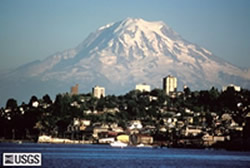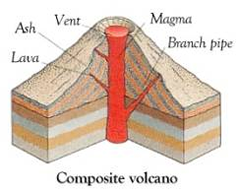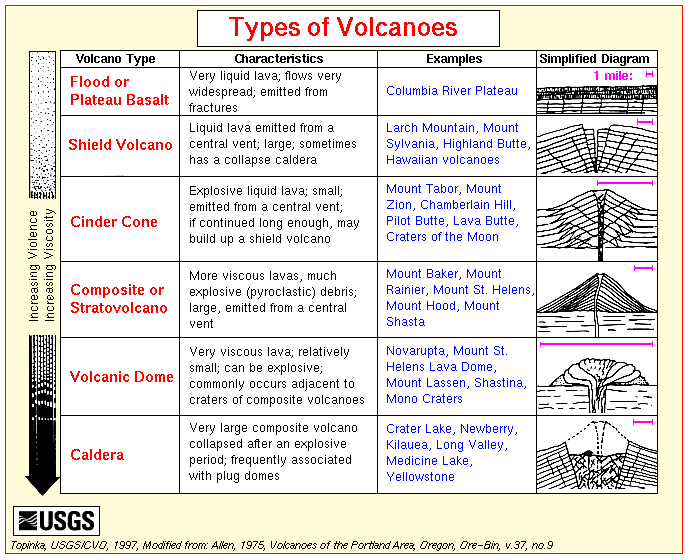Types of Volcano
Shield volcano Stratovolcano/Composite Cinder cone Lava Dome Supervolcano/Caldera Rift/Fissure eruption The stratovolcano is the standard view of volcano with a perfect cone erupting ash from a summit crater with rivers of lava flowing down the slopes.In reality there are a variety of volcano types.Lava /magama type is the main factor in causing the shape and eruptive style of a volcano.
The stratovolcano is the standard view of volcano with a perfect cone erupting ash from a summit crater with rivers of lava flowing down the slopes.In reality there are a variety of volcano types.Lava /magama type is the main factor in causing the shape and eruptive style of a volcano.
Shield volcanoes have long gentle slopes causd by highly fluid lava flows of basalt ie Hawaiis Kilauea. In comparison stratovolcanoes / Composite cones are steep sided due to more viscous lava and are explosive.These volcanoes have a higher proportion of silica minerals and more gas in the magma.ie Mt Rainier
Shield volcanoes on land form where basalt is erupted. This often over a hot spot or mantle plume away from plate margins are destructive plate boundaries ie. Hawaii. Stratovolcanoes are typical of destructive or subduction zone boundaries where sediments and water from the descending plate make the magma high in silica and gas and therefore more viscous and explosive.

Volcanic rocks are known as extrusive rocks. Silica rich magmas will erupt lavas such as rhyolite and dacite. They will be light in colour and low in density with lots of quartz and feldspar. They typically erupt at 850C. Silica poor but iron rich lavas, such as basalt lava, will be more fluid and will flow further. They typically erupt at 1000C.
Supervolcanoes are often very large and form no cone at all as they are the remains of enormous magma chambers which have exploded violently leaving a caldera. They are located over magma plumes or hot spots which punch through the overlying crust.Supervolcanoes typically originate under continental crust which allows the magma pool to build. ie Yellowstone
Volcanic Rifts and fissures are elongate cracks or splits in the earths crust which typically erupt basaltic lava,sometims the lava can fountain in acurtain of fire. Large scale rifts include the East Afican Rift valley where the rift has formed enormous volcanoes such as Kilimanjaro. Domes are formed by highly viscous lava exruding a solid mass of lava which does not flow away.Cinder cones are smaller scale examples of volcanic eruptions. formed when molten lava is ejected from a vent often on the side of a larger volcano.



